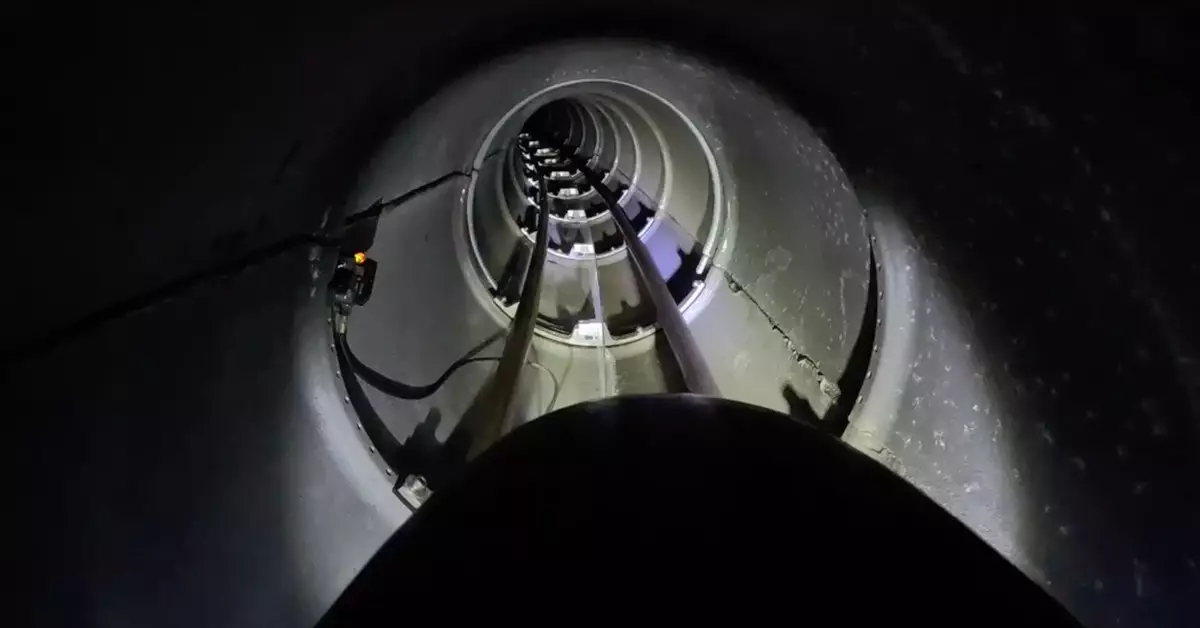The concept of the hyperloop, which was once deemed a fleeting fantasy or even “dead,” is experiencing a renaissance of sorts. Originally proposed by Elon Musk in 2013, this high-speed transportation system promised the ability to travel at speeds exceeding 700 miles per hour through near-vacuum tubes. Recent developments in Switzerland, involving a 1/12th scale model, have sparked renewed interest and debate about the feasibility of this revolutionary travel method. Despite the setbacks faced by numerous companies in this sector, the persistence of researchers and engineers presents a unique opportunity to reassess the hyperloop’s potential impact on transportation.
The Swiss Experiment: A Scaled-Down Innovation
The latest advancements in hyperloop technology have emerged from a project titled LIMITLESS, an acronym for Linear Induction Motor Drive for Traction and Levitation in Sustainable Hyperloop Systems. Conducted by a coalition of Swiss academic institutions and private partners, this initiative recently achieved significant milestones on a circular test track measuring 120 meters. The project demonstrated a successful journey covering 11.8 kilometers at a speed of approximately 25.3 miles per hour. While these figures appear modest, proponents argue that they could translate into robust applications in full-scale operations, potentially enabling travel between significant urban centers like Geneva and Bern.
Swisspod Technologies and its partners are engaged in evaluating critical subsystems like propulsion, energy consumption, and thermal management. This analytical approach aims to refine not just the concept but also the practical mechanisms needed to turn the hyperloop from a theoretical construct into a concrete reality.
Despite the promising developments in Switzerland, many skeptics remain. The historical tendency of hyperloop projects to succumb to financial and regulatory challenges looms large. Numerous startups have dissolved under the weight of mismanagement, leaving a cloud of doubt hanging over the viability of the hyperloop as a full-scale transportation alternative. The skepticism is further fueled by a general perception that hyperloop technology may be more about vision than feasibility, often branded as “vaporware” by critics who question whether such intricate engineering can ever transcend theoretical practices.
Additionally, the business model surrounding hyperloop remains a field of contention. Critics argue that without considerable investment and governmental backing, the ambitions tied to such high-profile projects may never materialize. On top of that, existing transportation infrastructures often exhibit their own set of inefficiencies that overshadow the promise of a new mode of travel.
However, the Swiss team’s commitment to further testing underscores a resounding optimism in the future of hyperloop technology. Plans are already underway to test freight applications, indicating a stepwise approach toward more ambitious passenger systems. Swisspod CEO Denis Tudor’s remarks highlight a long-term vision for transformative interconnectedness between communities, suggesting that successful trials could redefine our approach to mobility.
While their test tunnel in California has ceased to exist and many of Musk’s original aspirations have been diverted toward other ventures, the core idea behind hyperloop technology is barely flickering but, nonetheless, alive. It is critical to acknowledge that even with a successful freight application, mass adoption of hyperloop for passengers still requires an array of technological breakthroughs, funding, and effective regulatory frameworks.
As the hyperloop narrative continues to unfold, it becomes increasingly clear that, despite the numerous pitfalls encountered, the idea of ultrafast travel through vacuum tubes is not entirely out of reach. The efforts in Switzerland could pave the way for future advancements, providing hope for a technology long regarded as a speculative endeavor. Nevertheless, the road ahead remains fraught with challenges. As history has shown, the practicality of the hyperloop can only be gauged by tangible results. As stakeholders push forward, they must remain vigilant, aware that both enormous potential and significant hurdles await the realization of Elon Musk’s vision of a new mode of transportation.


Leave a Reply